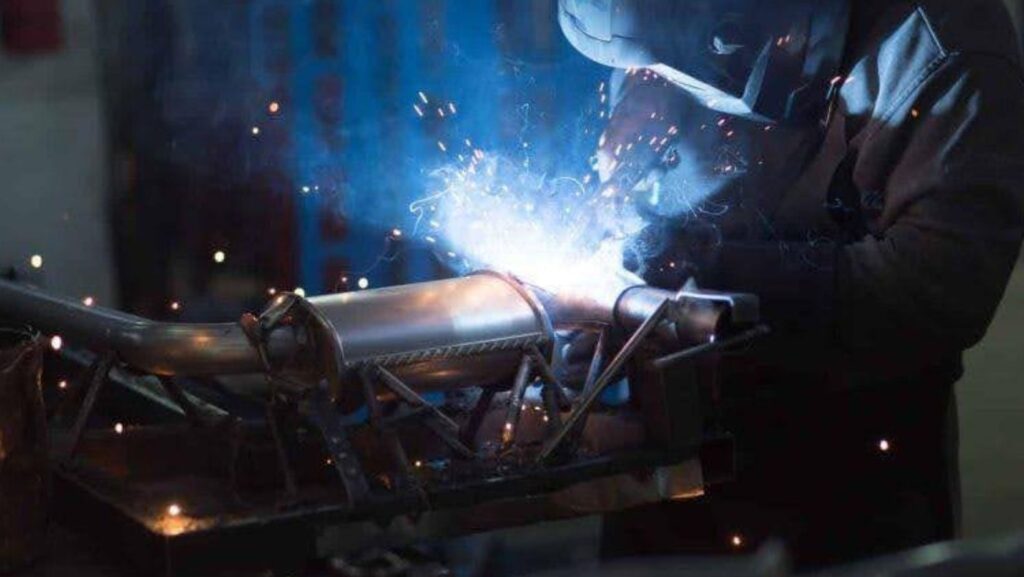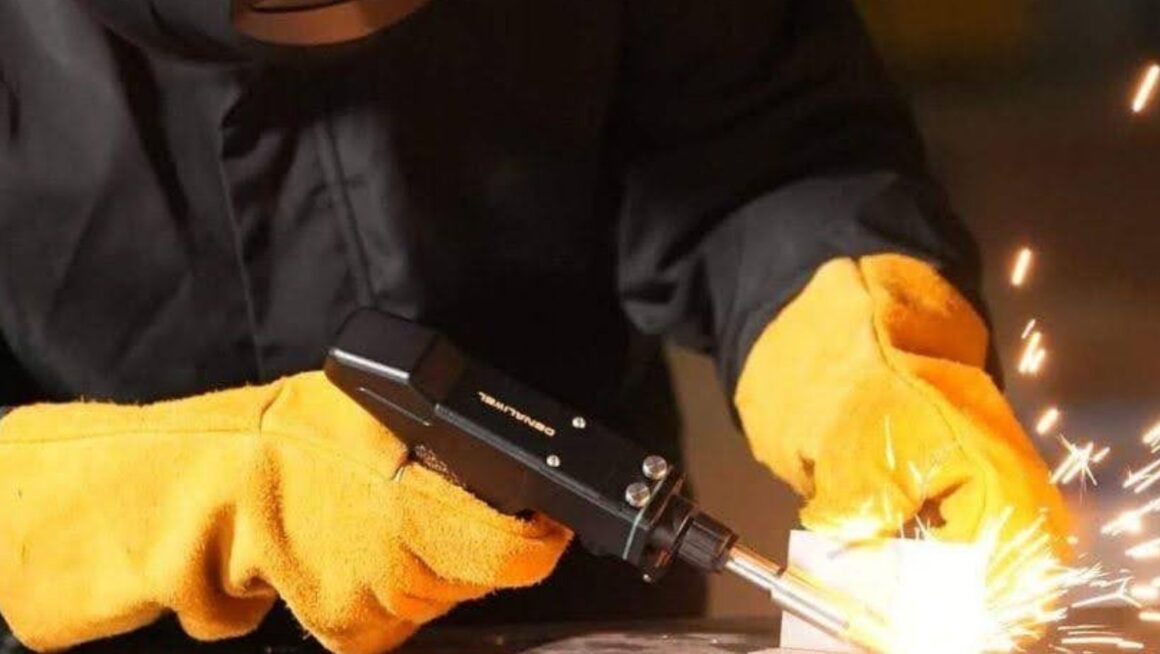
You rely on welded parts to do their job every single time. A weld may look fine on the surface, yet fail under vibration, thermal cycling, or fatigue. That gap between “looks OK” and “is actually reliable” is where precision laser welding and true quality science come in.
Laser welding uses a tightly focused beam of light to create deep, narrow welds with high speed and minimal surrounding heat, making it ideal for applications that demand accuracy and repeatability.
In this article, you’ll explore the science behind consistent laser-weld quality—how heat, light, materials, and control systems all work together. You’ll also see how providers like Denaliweld fit into that picture when you’re ready to scale precision welding in real production, without turning this into a sales pitch.
The Hidden Pain Points of Inconsistent Weld Quality
Even if you’re not a welding expert, you’ve probably felt the impact of poor weld consistency:
- Scrap and rework add up fast – Small parameter drifts cause porosity or lack of fusion, and suddenly you’re reworking or scrapping high-value parts.
- Quality varies between shifts or batches – The same joint design doesn’t always behave the same way, which is painful in automotive, aerospace, or medical production.
- Mission-critical failures are risky and expensive – Weld defects that escape inspection can lead to recalls, warranty claims, or safety issues.
Laser welding, when backed by good science and process control, is designed to attack exactly these pain points.
What “Precision” Really Means in Laser Welding
When you talk about precision welding quality, you’re really talking about three things:
- Repeatability – The process produces nearly identical welds over thousands of cycles.
- Minimal defects – Porosity, cracks, undercut, and lack of fusion are rare and detectable early.
- Consistent mechanical performance – Welds hit the required strength, hardness, and fatigue life every time.
Laser welding helps you achieve this because the beam provides a highly concentrated heat source, creating narrow, deep welds at high speed with a small heat-affected zone (HAZ).
A smaller HAZ means reduced distortion, lower residual stress, and better dimensional stability—especially important in thin sheets, precision assemblies, and lightweight structures.
Fundamentals: How the Laser Beam Builds a Strong Weld
Beam–Material Interaction in Simple Terms
Here’s what happens in a typical laser weld:
- The focused laser beam hits the surface.
- The material absorbs energy and melts locally.
- At higher power density, a small keyhole forms. This is a vapor channel that lets the beam penetrate deeply.
- The molten pool flows around the keyhole.
- As the beam moves on, the pool solidifies, forming the weld.
Key beam characteristics you control include:
- Wavelength – Affects how well the material absorbs the beam (for example, copper vs. steel).
- Power and power density – Define how quickly material melts and whether you operate in conduction or keyhole mode.
- Spot size and beam profile – Influence weld width and penetration.
- Modulation (pulsed vs. continuous) – Helps tune heat input and reduce defects on thin or sensitive parts.
Weld Geometry and the Heat-Affected Zone (HAZ)
Laser welding is famous for a high depth-to-width ratio: you get deep penetration with a narrow weld bead. That’s very different from traditional processes that often need more filler metal and produce a larger HAZ.
Why the small HAZ matters for you:
- Less distortion and warpage of thin parts
- Fewer residual stresses that could cause cracks later
- Better control over microstructure and mechanical properties near the weld
Microstructure and Mechanical Performance
As the weld cools, its microstructure (grain size, phase distribution) locks in. Cooling rate affects:
- Hardness – Too fast can create brittle phases, too slow can soften high-strength steels.
- Ductility and toughness – Needed for parts under impact or vibration.
- Fatigue life – Crucial in automotive body-in-white and aerospace structures.
In short, laser welding gives you the tools to tune microstructure by controlling heat input and cooling—but only if your process parameters are stable.
How Laser Welding Delivers Consistent Quality
Tight Control of Process Parameters
To get repeatable welds, you need consistent control of:
- Laser power
- Welding speed
- Focus position (focus/defocus)
- Beam shape and spot size
- Pulse or modulation frequency
These parameters directly impact weld width, penetration depth, and defect formation such as porosity or humping.
Actionable tip:
Create a clear “process window” for each joint type—define acceptable ranges for power, speed, and focus, then log them for every production run.
Beam Shaping and Dynamic Modulation
Modern systems can tailor the beam shape (for example, ring-core, line-point-line, or multi-spot patterns) to:
- Spread heat more evenly
- Stabilize the keyhole
- Reduce spatter and undercut on edges
Dynamic modulation allows you to change power or beam shape along the weld path—helpful for corners, start/stop zones, or dissimilar joints.
In-Process Monitoring and Feedback Control
You can’t manage what you can’t see. That’s why many advanced lines use:
- Optical sensors and cameras to watch the weld pool and plume
- Acoustic sensors to listen for irregularities
- Infrared or OCT systems to track penetration and seam position in real time
These monitoring systems feed data into closed-loop control. If penetration drops or plume behavior changes, the system can adjust power or speed automatically or flag the part for inspection.

Reviews in Springer and other journals show that such optical diagnostics and real-time monitoring significantly improve weld reliability in industrial environments.
Modeling and Predictive Quality Assurance
Engineers now use:
- Numerical models to simulate heat flow, distortion, and microstructural evolution
- Image processing to classify weld pool shapes
- Machine learning to predict defects from sensor data before they become visible
The goal is simple: predict weld quality from process data and prevent bad parts instead of just detecting them.
Quality Assurance and Defect Prevention
Common Defects and Where They Come From
Typical laser welding defects include:
- Porosity – Gas trapped in the solidifying weld pool
- Lack of fusion – Insufficient penetration or poor joint fit-up
- Undercut and humping – Unstable flow of molten metal
- Micro-cracks – Often linked to high residual stress or brittle microstructures
These often trace back to:
- Parameter drift (power, speed, focus)
- Poor joint preparation or gaps
- Highly reflective or contaminated surfaces
- Incorrect shielding gas or optics issues
Inspection, Testing, and Standards
To verify weld quality, manufacturers use a mix of:
- Visual or camera-based inspection
- Ultrasonic testing for internal defects
- Eddy current and acoustic emission methods for surface and near-surface flaws
For mission-critical parts, standards typically require that welds be at least as strong as the base material. Test plans depend on service conditions: static loads, cyclic loads, temperature, and environment.
Ensuring Repeatability Across Batches
To keep welds consistent over months and years, you should:
- Define and lock a validated process window
- Qualify and re-qualify procedures when materials, thicknesses, or optics change
- Use change control so any adjustment to parameters is documented and tested
- Combine in-process monitoring with periodic destructive tests
Why Materials Matter: From Copper to Composites
Highly Reflective Metals and Advanced Alloys
Metals like copper and aluminum reflect a lot of laser energy and conduct heat quickly. That makes welding more challenging:
- Initial absorption can be low, leading to unstable keyholes
- Conductivity can spread heat away from the weld zone, reducing penetration
Solutions often include:
- Choosing the right wavelength
- Using tailored beam profiles
- Pre-heating or surface preparation to stabilize absorption
Thin Sections and Dissimilar Joints
Laser welding is excellent for thin sheets and dissimilar combinations (for example, steel to aluminum), but only if heat input is tightly controlled.
You need:
- Accurate joint fit-up
- Beam position tolerances in the sub-millimeter range
- Carefully tuned power and speed to avoid burn-through or incomplete fusion
Multi-Material and Composite Systems
Modern designs often stack metals with polymers or other layers. Here, you want:
- Highly localized heat to protect the non-metal component
- Minimal HAZ to avoid delamination or property loss in the composite
Laser welding’s focus and speed make it one of the few processes capable of handling such complex joints with repeatable quality.
How Laser Welding Compares to Traditional Processes
A quick side-by-side view:
This is why industries like automotive body-in-white, medical devices, and electronics increasingly specify laser welds for critical joints.
How Denaliweld Turns Welding Science into Repeatable Results
All the physics and metallurgy you’ve just seen are only useful if they’re built into real, practical systems. Denaliweld focuses on laser-welding solutions that put process control, monitoring, and parameter optimization at the center. Their content and systems emphasize how laser power, speed, focus, and beam shape must work together to hit a stable process window, especially in high-volume automotive, aerospace, and medical manufacturing.
When you work with a provider that thinks in terms of:
- Robust parameter sets instead of “trial-and-error” tuning
- Integrated in-process sensing and feedback loops
- Clear procedures for qualification, change control, and scale-up
Conclusion
Consistent weld quality isn’t just a nice-to-have—it’s the backbone of safe, reliable, and scalable manufacturing. When you understand how laser energy, material behavior, and process control all interact, you’re far better equipped to reduce defects, cut scrap, and avoid costly failures in the field.
By focusing on stable parameters, tight process windows, and real-time monitoring, you turn laser welding from a specialised technique into a predictable, repeatable production asset. As you evaluate where to upgrade your joining processes, consider how a science-driven laser-welding approach—and partners like Denaliweld who build these principles into their solutions—can strengthen your next generation of products. The more intentional you are about weld quality today, the more confident you can be in every part leaving your line tomorrow.












